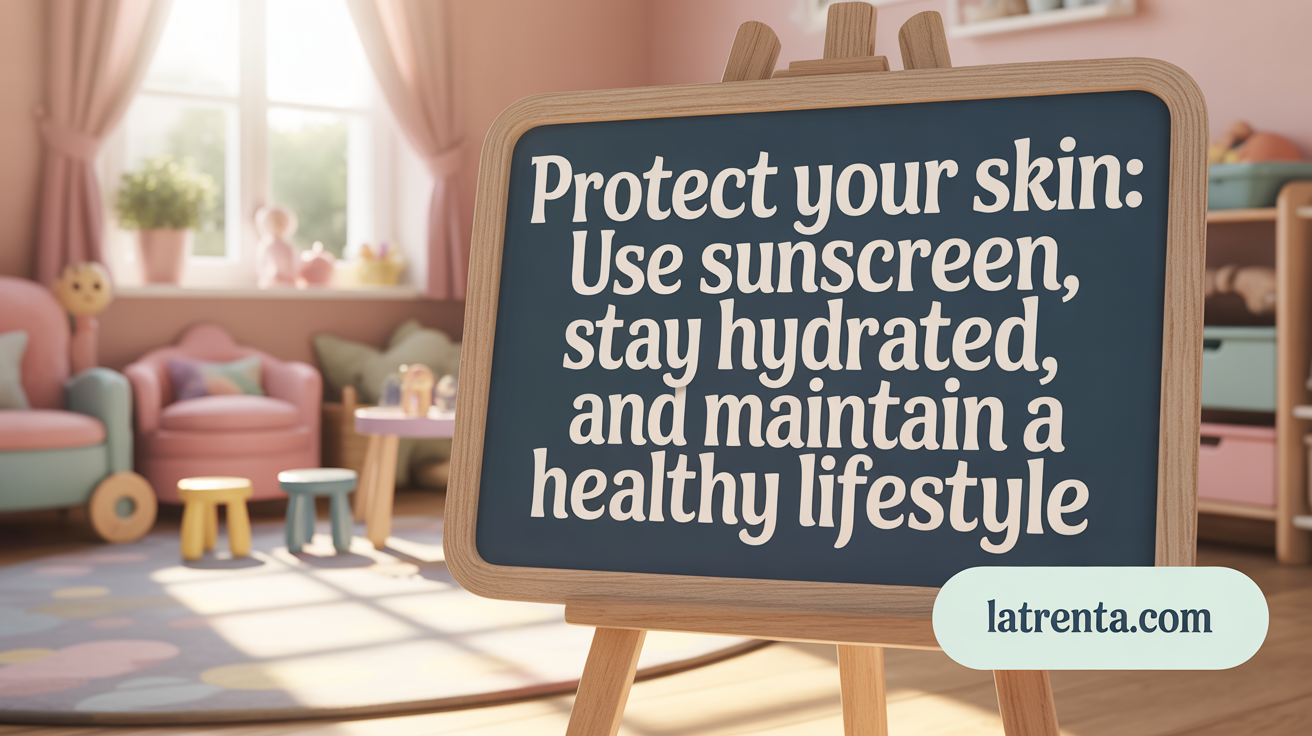Understanding Crepey Skin and Its Remedies
Crepey skin—a condition characterized by thin, wrinkled, and fragile skin—often results from aging, sun damage, and lifestyle factors that degrade collagen and elastin. While surgery offers dramatic correction, many seek effective non-invasive options to restore skin firmness and elasticity without downtime. This article explores the top five non-surgical treatments specifically designed to combat crepey skin, detailing how they work, their benefits, limitations, and suitability for various skin concerns and body areas.
Key Facts List on Non-Invasive Skin Tightening and Crepey Skin
- Ultrasound skin tightening delivers focused ultrasound energy to stimulate collagen production deep within the skin.
- FDA-cleared areas for Ultherapy include the brow, chin, neck, and chest, providing non-invasive lifting and tightening.
- Results from Ultherapy are gradual, with visible improvements typically appearing between 2 to 3 months post-treatment.
- Radiofrequency treatments like Thermage and Profound RF utilize electromagnetic energy to heat deep skin layers, stimulating collagen and elastin.
- Laser treatments such as fractional CO2 (Fraxel Re:pair) create micro-injuries that promote collagen remodeling with minimal downtime.
- Microneedling and RF microneedling trigger collagen synthesis through controlled micro-injuries and RF energy, improving skin texture and firmness.
- Injectable biostimulants like Sculptra and Lanluma stimulate fibroblasts to increase collagen and elastin, while thread lifts mechanically lift tissue and induce collagen formation.
- Crepey skin results from collagen and elastin deterioration, accelerated by aging, sun damage, lifestyle factors, and genetics.
- Non-surgical treatments work by stimulating natural collagen through energy-based methods like ultrasound, RF, and laser, leading to gradual tightening.
- Prevention of crepey skin includes sun protection, hydration, healthy diet, avoiding smoking, and maintaining stable weight for skin integrity and elasticity.
1. Ultrasound Therapy: Deep Collagen Stimulation with Ultherapy®
What is the mechanism behind ultrasound skin tightening?
Ultrasound skin tightening works by delivering focused ultrasound energy deep into the layers of the skin, typically up to 5 millimeters beneath the surface. This targeted heat stimulates the production of collagen, the protein responsible for skin firmness and elasticity. As collagen fibers contract and new collagen begins to form, the skin gradually becomes tighter and smoother over time.
Which areas are FDA-cleared for Ultherapy?
Ultherapy is an FDA-approved treatment using ultrasound technology for non-invasive lifting and tightening of specific facial and neck areas. These include the brow (to lift drooping eyebrows), chin, neck, and chest. Its ability to stimulate collagen deep within these regions makes it a popular choice for those seeking a natural, non-surgical enhancement.
What are the treatment areas and how effective are they?
This technology is versatile and effective for various parts of the body prone to sagging and loss of elasticity. It is especially noted for lifting the brow, tightening the skin around the neck, and improving skin texture on the chest. While results vary between individuals, many patients notice gradual improvements, with visible lifting typically appearing between 2 to 3 months post-treatment.
How does collagen remodeling progress over time?
Following Ultherapy, collagen production is stimulated gradually, leading to progressive tightening and lifting of the skin. Most patients observe subtle improvements within the first few weeks, with the full effects manifesting over 3 to 6 months. The process continues as new collagen builds and existing fibers remodel, resulting in natural-looking, long-lasting results.
Is Ultherapy safe and who is an ideal candidate?
Ultherapy is considered safe when performed by a qualified technician or dermatologist. It is non-invasive, involving no surgery, incisions, or anesthesia. Ideal candidates are those with mild to moderate skin laxity who are looking to lift and tighten their skin without downtime. However, individuals with severe sagging or certain medical conditions should consult their healthcare provider to determine suitability.
How much does ultrasound skin tightening typically cost?
The average cost for Ultherapy varies depending on the treatment area and the geographic location. On average, patients pay around $993 per session, with prices ranging from approximately $770 to $1,862. Multiple sessions may be recommended for optimal results, which can influence the overall expense.
| Treatment Area | Typical Cost Range | Notes |
|---|---|---|
| Face (brow, jawline) | $770 - $1,500 | Cost depends on area size and provider |
| Neck | $900 - $2,000 | Sometimes combined with face treatment |
| Chest | $1,000 - $1,862 | For skin tightening, may vary |
| Whole Face & Neck | $2,000+ | Comprehensive treatment |
Ultrasound therapy offers a safe, effective approach to improving skin firmness with subtle, natural results that continue to develop over time. It is an option worth considering for individuals seeking non-invasive skin rejuvenation.
2. Radiofrequency Treatments: Thermage® and Profound® RF for Skin Firming
How do radiofrequency treatments use energy to tighten skin?
Radiofrequency (RF) treatments, such as Thermage and Profound RF, utilize electromagnetic energy to heat the deep layers of the skin. This controlled heating process stimulates the body's natural collagen and elastin production.
Unlike surgical procedures, RF therapy is non-invasive and does not require incisions. It effectively delivers heat into the dermis, which is the skin's supportive layer, causing immediate tightening sensations and promoting collagen regeneration over time.
What are the applications and target areas for RF treatments?
RF treatments are versatile and can be used on various parts of the body, including the face, neck, hands, and other areas prone to sagging. They are suitable for patients with mild to moderate skin laxity who seek non-surgical options.
These treatments are particularly popular for improving skin firmness and texture, reducing fine lines, and tightening areas without downtime.
What results can patients expect and how long do they last?
Patients typically see some immediate tightening during the procedure, but the most noticeable results develop gradually, peaking around 6 months after treatment. Collagen and elastin production increase gradually, enhancing skin firmness.
The effects can last from 2 to 3 years, depending on factors such as age, skin condition, and lifestyle practices. To maintain results, follow-up sessions may be recommended.
Are there minimally invasive options and what about recovery?
Most RF treatments are minimally invasive with little to no downtime. Patients can generally resume normal activities immediately after the procedure.
In some advanced variants, such as RF with needle insertion, the treatment may cause mild discomfort and require a brief recovery period, often around a few days.
What is the cost range and who is a suitable candidate?
The cost for RF skin tightening varies widely. On average, treatments like Thermage cost approximately $1,230, while other procedures may range from $755 to over $4,848 for specialized options.
Candidates are typically individuals with mild to moderate skin sagging not suitable for surgical lifts. Good candidates are those seeking non-invasive, quick procedures with minimal risk.
It is essential for patients to consult certified dermatologists or plastic surgeons to evaluate skin condition and determine the most suitable treatment plan.
3. Laser Skin Tightening and Resurfacing: Targeted Collagen Renewal
How do laser treatments stimulate collagen without damaging the skin?
Laser skin tightening works by delivering precise heat into the deeper layers of the skin, encouraging the body’s natural collagen production process. Unlike traditional laser procedures that cause wounding, fractional laser treatments create micro-injuries that stimulate the skin's healing response. This promotes the generation of new collagen fibers, which improves skin firmness, elasticity, and texture over time. The process enhances skin tightness gradually, resulting in a more youthful appearance without significant damage or downtime.
What are fractional CO2 laser and Fraxel Re:pair technology?
Fractional CO2 laser, such as Fraxel Re:pair, is a popular treatment that targets specific areas with tiny columns of laser energy. These micro-injuries encourage collagen remodeling and skin renewal while leaving surrounding tissue intact, speeding up recovery. Fraxel Re:pair uses fractional CO2 laser technology to resurface the skin surface, reduce wrinkles, scars, and age spots. It is highly effective in improving crepey skin on various body parts, including the face, neck, and stomach.
How many sessions are needed, and what is the recovery time?
Typically, patients undergo 3 to 5 treatment sessions spaced several weeks apart. Each session lasts about 30 minutes to an hour, depending on the area treated. Post-treatment, some redness and swelling are common but usually subside within a week. Healing times vary; most people experience mild peeling or crusting for 1-2 weeks. Long-term results become visible over 2-6 months, with continued collagen contraction and remodeling happening during this period.
What skin conditions can laser resurfacing treat?
Laser skin resurfacing effectively reduces fine lines and wrinkles, improves skin scars—whether from acne or injury—and diminishes age spots, sun damage, and uneven skin tone. It is particularly beneficial for crepey skin, providing tightening and smoothing effects for tired, sagging skin on the face, neck, and even the stomach.
What are the benefits and potential downtime?
The key advantages include precise targeting, minimal invasive nature, and significant skin rejuvenation. Patients enjoy a smoother texture, improved elasticity, and a more radiant appearance. While shorter recovery times are typical compared to surgical options, some temporary side effects like redness or swelling may occur, requiring at least one to two weeks of downtime. Proper post-treatment skincare is essential for optimal results.
How effective is laser treatment for crepey skin on the face, neck, and stomach?
Laser resurfacing has shown high effectiveness in treating crepey, thin skin. The thermal energy stimulates collagen remodelling, leading to tighter, firmer skin. Patients often see noticeable improvements in skin texture and elasticity after a series of treatments, with long-lasting results when combined with good skincare and sun protection. It is a preferred non-surgical option for those seeking significant rejuvenation of aged, sagging skin on multiple body parts.
4. Microneedling & RF Microneedling: Collagen Induction for Skin Texture and Firmness
How do microneedling and RF microneedling create micro-injuries to stimulate natural collagen repair?
Microneedling involves puncturing the skin with tiny, sterile needles, which creates controlled micro-injuries. These small injuries trigger the skin's natural healing process, stimulating the production of new collagen and elastin fibers. This process improves skin texture, reduces fine lines, and enhances skin firmness.
RF microneedling combines traditional microneedling with radiofrequency energy delivery. As the needles create micro-injuries, RF energy heats the deeper layers of the skin, boosting collagen production more effectively. This dual approach accelerates skin tightening and can address more pronounced laxity.
What is the typical treatment course duration and what improvements can one expect?
Typically, a series of 3 to 6 sessions spaced about 4 to 6 weeks apart is recommended for optimal results. After completing the treatment course, most individuals notice a gradual improvement in skin smoothness and firmness over 3 to 6 months. The skin appears more lifted, with a reduction in crepey texture and fine lines.
What are the applications of microneedling and RF microneedling for neck, face, and body skin laxity?
Microneedling and RF microneedling are versatile treatments suitable for various areas. They are effective on the face for improving tone and texture and reducing early signs of aging. The neck, often prone to crepiness and laxity, responds well, helping to tighten and smooth the skin.
In addition, these procedures can be applied to other parts of the body, such as the décolletage, arms, and abdomen, to address skin laxity and cellulite.
How safe are these treatments, and what is the typical downtime?
Both microneedling and RF microneedling are considered safe for most skin types. They involve minimal invasiveness, with tiny needles and controlled heat, leading to a low risk of side effects.
Downtime is generally minimal; patients may experience redness, slight swelling, or mild tenderness that usually resolves within 24 to 48 hours. Due to their safety profile and minimal downtime, these treatments can be conveniently incorporated into routine skincare.
Are these options suitable for various skin types?
Yes, microneedling and RF microneedling are safe and effective across a broad range of skin tones and types. Unlike laser treatments, they do not pose a high risk of pigmentation changes, making them suitable options for individuals with darker skin.
Overall, these collagen-inducing procedures offer a non-invasive solution to improve skin texture, firmness, and elasticity, especially beneficial for early signs of crepey or sagging skin.
5. Injectable Biostimulants and Thread Lifts: Volume Restoration and Collagen Boosting

What are Biostimulatory injectables like Sculptra, Lanluma, and Profhilo?
Biostimulatory injectables such as Sculptra, Lanluma, and Profhilo are innovative treatments that help restore volume and improve skin texture. Sculptra and Lanluma are poly-L-lactic acid (PLLA) based; Profhilo contains high concentrations of hyaluronic acid coupled with a proprietary formulation.
How do these injectables increase collagen and elastin?
These treatments stimulate the skin's natural healing response by encouraging fibroblast activity, which leads to increased production of collagen and elastin. Collagen provides firmness and structure, while elastin imparts elasticity, both essential for rejuvenating aging skin.
What are thread lifts, and how do they work?
Thread lifts utilize dissolvable sutures made from materials like PLLA and PCL that are inserted into the skin to lift sagging areas. Over time, these sutures induce collagen formation around the threads, promoting a subtle lifting effect and skin tightening.
How do these treatments provide subtle lifting and promote collagen synthesis?
Both biostimulants and thread lifts focus on reinforcing skin structure gradually. The threads mechanically lift the tissue, while the collagen stimulated around the sutures enhances skin firmness over 12-18 months.
How long do results last, and which areas can be treated?
Results from injectables and thread lifts typically last between 1 to 2 years, depending on individual factors and treatment specifics. Common areas treated include the cheeks, jawline, neck, and areas with mild to moderate sagging.
What are the cost considerations and patient candidacy?
Costs vary widely, with biostimulant injections averaging around $800 to $2,000 per session and thread lifts costing approximately $1,700 to $3,000. Candidates usually have mild to moderate skin laxity, are in good overall health, and seek subtle, natural-looking improvements. It’s important to have a consultation with a certified specialist to determine the best approach based on individual needs.
This combination of volume restoration and collagen stimulation offers a minimally invasive option for those aiming to improve skin firmness, reduce fine lines, and achieve a more youthful appearance without extensive surgery.
Causes and Contributing Factors for Crepey Skin

What are the common causes and contributing factors for crepey skin?
Crepey skin appears when the skin loses its firmness and elasticity, often showing a thin, wrinkled, and fragile texture. The primary reason for this condition is the deterioration of collagen and elastin fibers, the proteins responsible for maintaining skin’s structure and resilience.
As we age, the natural production of collagen decreases, making the skin thinner and more susceptible to damage. Sun exposure, particularly UV radiation, significantly accelerates the breakdown of elastin fibers, worsening the loss of skin elasticity.
Various lifestyle factors also play a role in the development of crepey skin. Fluctuations in weight, such as rapid weight loss, can stretch the skin and contribute to its sagging appearance. Dehydration reduces skin hydration, making it look dull and more prone to crepiness.
Other elements include excessive alcohol consumption, smoking, and high levels of stress, all of which can impair skin health and slow down regenerative processes. The use of certain medications, like corticosteroids, can weaken skin structure further.
Genetic predispositions also influence skin texture, as some individuals are naturally more prone to thin, fragile skin. Environmental pollution and poor sleep habits compound these effects, exposing skin to oxidative stress and impairing its ability to recover.
In summary, crepey skin results from a combination of biological aging, environmental damage, and lifestyle choices that compromise the skin’s collagen and elastin network, leading to a more delicate and wrinkled appearance.
| Cause | Impact | Additional Details |
|---|---|---|
| Collagen and elastin breakdown | Loss of skin firmness and elasticity | Accelerated by sun, aging |
| Aging | Reduced collagen synthesis | Natural decline over time |
| Sun damage | Degradation of skin fibers | UV exposure increases aging markers |
| Weight fluctuations | Stretching and sagging of skin | Rapid weight loss can accentuate sagging |
| Dehydration and poor hydration | Makes skin look dull and fragile | Hyaluronic acid helps maintain hydration |
| Smoking and pollution | Damages skin cells and accelerates aging | Free radicals cause oxidative stress |
| Stress and sleep deprivation | Impairs skin repair processes | Chronic stress worsens skin health |
| Medications | Can thin skin and impair collagen synthesis | Corticosteroids are common culprits |
| Genetics | Predisposes skin to thinning and fragility | Varies among individuals |
More about causes of crepey skin and contributing factors can be searched under: "Causes of crepey skin and contributing factors"
How Non-Surgical Treatments Improve Skin Laxity and Crepey Texture

How do non-surgical treatments work to improve skin laxity and reduce crepey skin?
Non-surgical skin tightening approaches mainly focus on stimulating the skin's own production of collagen and elastin, which are proteins that provide firmness, elasticity, and resilience. As we age, collagen and elastin production decline, leading to looser, thinner, and crepey skin.
Techniques like ultrasound, radiofrequency, and laser treatments deliver controlled heat into the deep layers of the skin without damaging the surface. For instance, ultrasound treatments such as Ultherapy focus ultrasound energy, penetrating up to 5mm into the skin to trigger a natural healing process. This stimulates fibroblasts—the cells responsible for collagen production—resulting in gradual skin tightening.
Radiofrequency (RF) devices like Thermage and Profound RF also utilize electromagnetic energy to heat the tissue beneath the skin. This heating induces collagen remodeling and increases its production, making the skin appear firmer over time. Laser treatments, particularly fractional lasers like Fraxel, create micro-injuries that stimulate collagen growth during the healing process.
The effects of these treatments are not immediate. Results develop progressively, typically over three to six months, as new collagen stabilizes and reorganizes the skin’s architecture. Multiple sessions are often needed for optimal results.
In addition to energy-based treatments, topical agents such as retinol and hyaluronic acid help support skin health. Retinoids promote collagen synthesis, while hydrating ingredients improve skin moisture and plumpness, making crepey skin less noticeable.
These non-invasive options are generally safe for all skin types, with minimal downtime. They are especially suitable for individuals with mild to moderate skin laxity. For more significant sagging, minimally invasive procedures like microneedling or laser resurfacing might be recommended to further promote collagen growth and improve texture.
Benefits and Limitations of Non-Surgical Treatments for Crepey Skin
Non-surgical skin treatments for crepey skin offer a range of advantages, particularly for individuals seeking subtle improvements without the risks and downtime associated with surgery. These procedures, which include ultrasound (such as Ultherapy), radiofrequency (like Thermage), laser therapies, and combination treatments, are generally safe, minimally invasive, and performed in-office often within an hour.
One significant benefit is the minimal downtime. Patients can usually resume their daily activities shortly after treatment, making these options very convenient. The results from non-surgical methods tend to develop gradually over weeks to months, providing a natural transition to firmer, smoother skin. This gradual improvement appeals to many who prefer a subtle enhancement over a surgical lift.
Most treatments are effective for mild to moderate skin laxity, making them suitable for early signs of aging or less severe sagging. They stimulate collagen and elastin production, which improves skin tone, elasticity, and texture. For example, ultrasound therapy penetrates deep to heat tissue and stimulate collagen, with results typically appearing around 2 to 6 months post-treatment. Radiofrequency treatments similarly induce heating in deeper layers, offering immediate tightening sensations and longer-term benefits that last for 2-3 years.
However, these treatments do have limitations. They usually require multiple sessions to achieve optimal results, which can increase the overall cost and time commitment. They tend to be less effective for advanced or deep sagging, where surgical options may be necessary for significant correction. Consequently, individuals with more pronounced skin laxity might not see the dramatic improvement they desire through non-invasive means alone.
Temporary side effects are common, such as redness, swelling, bruising, or mild discomfort, which generally resolve quickly. While these treatments are safe for all skin types, their effectiveness varies based on an individual’s age, skin condition, and lifestyle factors like sun exposure, smoking, and hydration.
In comparison to surgical procedures, non-surgical options typically offer less dramatic but still meaningful results with a much lower risk profile. Surgery can produce more immediate and noticeable lifting and tightening, but it involves longer recovery, higher costs, and a higher potential for scarring or complications. Non-invasive treatments, therefore, are often preferred by those seeking subtle, natural improvements with minimal intervention.
In summary, non-surgical skin tightening treatments provide a practical, low-risk choice for combatting early signs of skin laxity and crepey skin. They fit well into a skincare regimen aimed at maintenance and prevention but may fall short for severe sagging. Consulting with a certified specialist can help determine the most suitable approach based on individual skin needs and aging patterns.
Recommended Topical Creams for Crepey Skin and Their Role
What topical creams are recommended for treating crepey skin, and how do they contribute to skin improvement?
Treating crepey skin often involves the use of specialized topical creams. These products usually contain ingredients that work synergistically to enhance skin texture, elasticity, and hydration.
Retinoids are one of the most effective components. Found in products like Shani Darden Body Reform Treatment Serum and Paula's Choice Skin-Smoothing Retinol Body Treatment, retinoids promote faster cell turnover. This process helps thicken the skin, making it more resilient and less prone to crepiness.
Peptides are another beneficial ingredient. Present in formulations such as Alastin TransForm Body Treatment and Nesessaire The Body Retinol, peptides stimulate collagen and elastin production. These proteins are essential for maintaining skin firmness and elasticity.
Hyaluronic acid is a powerful hydrator. Moisturizers containing hyaluronic acid, like Gold Bond Age Renew and Naturium Skin-Renewing Lotion, attract water into the skin, providing deep hydration. This plumps the skin, reducing the appearance of thin, crepey areas.
Alpha hydroxy acids (AHAs), such as glycolic acid and lactic acid, are used for gentle exfoliation. They help remove dead skin cells from the surface, encouraging new cell growth and improving skin texture.
Limitations of topical treatments
While these creams can significantly improve skin smoothness and prevent further deterioration, they have limitations. They often cannot replace the dramatic tightening effects achieved through professional treatments.
For best results, combining topical therapies with sun protection, adequate hydration, and in-office procedures like laser treatments or ultrasound therapy can be more effective. Consistency is crucial; regular application over weeks to months yields the best improvements.
In summary, selecting the right topical products that contain retinoids, peptides, hyaluronic acid, and AHAs can help manage crepey skin, but they are most effective when used as part of a comprehensive skin care routine.
Preventing and Slowing the Development of Crepey Skin

How can individuals prevent or slow the development of crepey skin?
Preventing crepey skin largely depends on protecting the skin from damage and maintaining overall skin health. A primary step is consistent sun protection. Regularly applying a broad-spectrum sunscreen with at least SPF 30, wearing protective clothing, and seeking shade during peak sunlight hours can significantly reduce UV exposure, which is the most preventable cause of early skin aging.
Proper hydration is also crucial. Using moisturizers that contain hydrating ingredients such as hyaluronic acid, glycerin, or coconut oil can help keep the skin plump, improve elasticity, and prevent dryness that contributes to crepiness.
Diet plays a vital role too. Eating a balanced diet rich in antioxidants, vitamins A, C, D, and E, omega-3 fatty acids, and plenty of fruits and vegetables supports skin repair and resilience. Nutrients like vitamin C promote collagen synthesis, while others like omega-3s help maintain the skin’s barrier.
Avoiding harmful habits such as smoking and excessive alcohol consumption can also prevent premature skin aging. Smoking damages collagen and elastin, while alcohol can dehydrate the skin and impair its regenerative processes.
Maintaining a stable weight prevents sudden stretching or sagging of the skin. Regular skincare routines that include gentle washing, moisturizing, and the use of products with retinol, peptides, and vitamin C can stimulate collagen and elastin production, improving skin firmness.
By adopting these strategies, individuals can effectively delay the onset of crepey skin or slow its progression, preserving a more youthful and smooth appearance over time.
| Strategy | Details and Benefits | Additional Tips |
|---|---|---|
| Sun protection | Use SPF 30+ broad-spectrum, avoid peak sun hours, wear protective clothing | Reapply every 2 hours, wear wide-brim hats |
| Hydration and moisturization | Hydrating ingredients like hyaluronic acid, coconut oil help skin stay plump | Keep skin hydrated both externally and internally |
| Nutritional support | Vitamins A, C, D, E, omega-3s support collagen, skin repair | Eat colorful fruits and vegetables |
| Avoid harmful habits | No smoking, limit alcohol consumption | Regular check-ins on skincare routine |
| Maintaining stable weight | Prevents skin stretching and sagging | Balance diet and exercise routines |
This multi-faceted approach helps create a strong foundation for skin health, reducing the risk or delaying the appearance of crepey skin.
Choosing the Right Non-Surgical Treatment: Effectiveness, Suitability, and Cost Considerations

How should someone choose the appropriate non-surgical treatment for crepey skin based on effectiveness, suitability, and cost?
Selecting the best non-surgical option for crepey skin depends on several important factors. First, it’s essential to assess the severity of skin laxity. Mild to moderate looseness often responds well to treatments like radiofrequency (RF) or ultrasound, which stimulate collagen and elastin production with minimal downtime. Devices such as Ultherapy or Thermage are FDA-cleared options that can target different areas including the face, neck, and body.
Next, consider the specific areas needing improvement and your skin type. For instance, ultrasound treatments penetrate up to 5mm deep, making them effective for firming the brow, chin, neck, and chest. RF treatments are suitable for the face, hands, and body, and are generally safe for all skin tones. Laser skin tightening can also be considered for more targeted effects, typically requiring multiple sessions.
Cost is another critical factor. Ultrasound treatments average around $993, while RF treatments might cost around $755. More extensive procedures like thread lifts or laser resurfacing tend to be more expensive but may yield more immediate and noticeable results. Over-the-counter creams with retinol or peptides are more budget-friendly options that help prevent further skin damage, though they offer subtle improvements.
The number of sessions and recovery time vary by treatment. Non-invasive methods like ultrasound, RF, and laser often involve little to no downtime, with results gradually appearing over several months. More intensive procedures, such as laser resurfacing or minimally invasive needle-based RF treatments, can provide more dramatic tightening but may require weeks of recovery.
Finally, consulting with qualified dermatologists or skincare specialists is vital. They can assess your skin’s condition, discuss your goals, and recommend treatments that balance effectiveness, safety, and affordability. Tailoring the treatment plan to your individual needs ensures the best chance of achieving desired, natural-looking results while managing costs and recovery expectations.
Summary of common non-surgical skin tightening treatments:
| Treatment Type | Average Cost (USD) | Typical Results Timeline | Session Frequency | Key Benefits |
|---|---|---|---|---|
| Ultrasound (Ultherapy) | $993 | 2-6 months | 1 session | Deep collagen stimulation, no downtime |
| RF (Thermage, Profound RF) | $755 | 6 months+ | 1-2 sessions | Immediate tightening sensation, long-lasting effects |
| Laser Skin Tightening | $1,815 | 2-6 months | Multiple sessions | Long-term skin remodeling |
| Combination (IPL/RF) | Varies | Gradual | Multiple sessions | Targets multiple skin concerns |
| Thread Lift | $1,761 | 1 month+ | 1 session | Mechanical lift with collagen boost |
Choosing the right treatment requires balancing personal goals, skin condition, budget, and recovery time. An individualized plan developed with a skincare expert ensures more predictable and satisfying results.
Making Informed Choices for Smooth, Firm Skin
Non-surgical treatments for crepey skin offer a compelling alternative to surgery, providing effective collagen stimulation and skin tightening with minimal downtime. Whether it's ultrasound, radiofrequency, laser therapies, microneedling, or injectables, each modality offers unique benefits tailored to different skin types and degrees of laxity. Combined with preventive skincare and lifestyle habits, these treatments can significantly enhance skin texture and firmness. Consulting a qualified skincare professional is vital to crafting a personalized approach based on individual needs, expectations, and budgets—helping you regain youthful, resilient skin with safe and scientifically backed techniques.
References
- Non-Surgical Skin Tightening - American Board of Cosmetic Surgery
- Crepey skin: Treatment, causes, and how to treat it
- Many ways to firm sagging skin - American Academy of Dermatology
- Crepey Skin Treatment Options: What Really Works | Hubmed
- Top 5 Non-Surgical Anti-Aging Treatments for Youthful Skin
- Our Top 5 Non-Surgical Treatments For Treating Skin Laxity
- Non-Surgical Skin Tightening Cost and Procedure Guide - CareCredit
- 5 Best Procedures to Tighten Loose Skin Without Surgery - Laser NY
- our top 5 non-surgical treatments for neck rejuvenation
- 5 Non-Surgical Skin Tightening Treatments - City Skin Clinic
